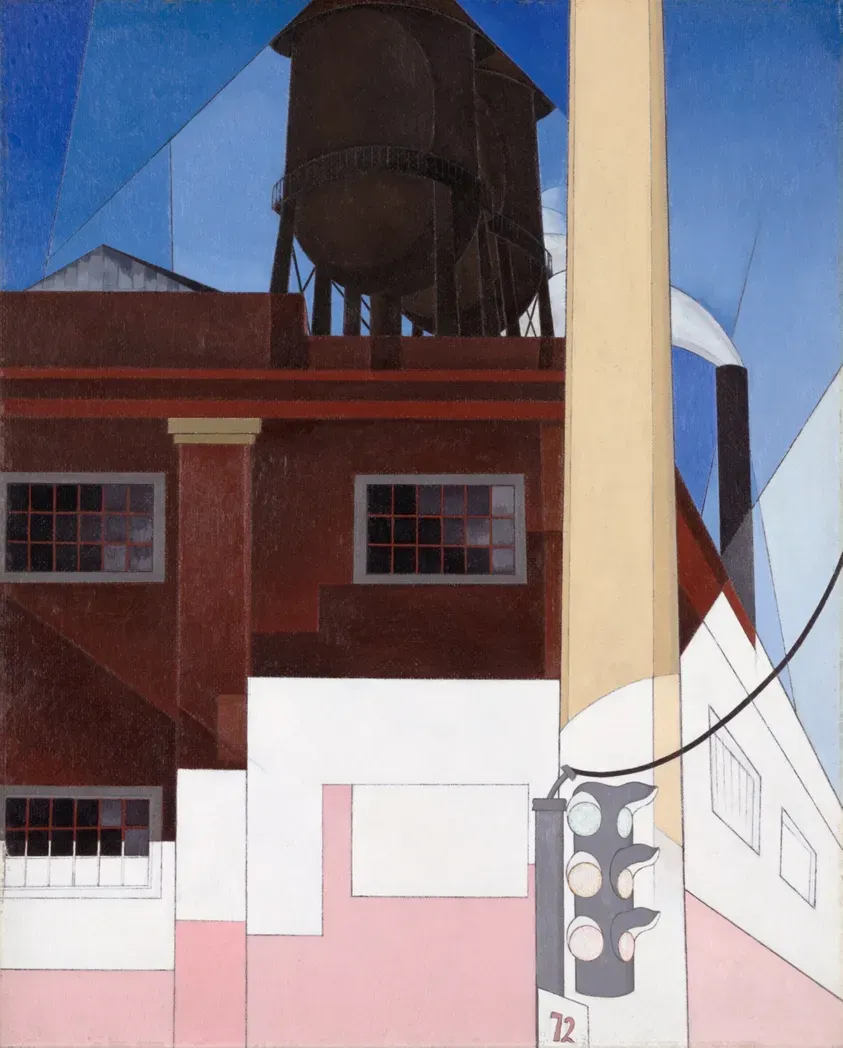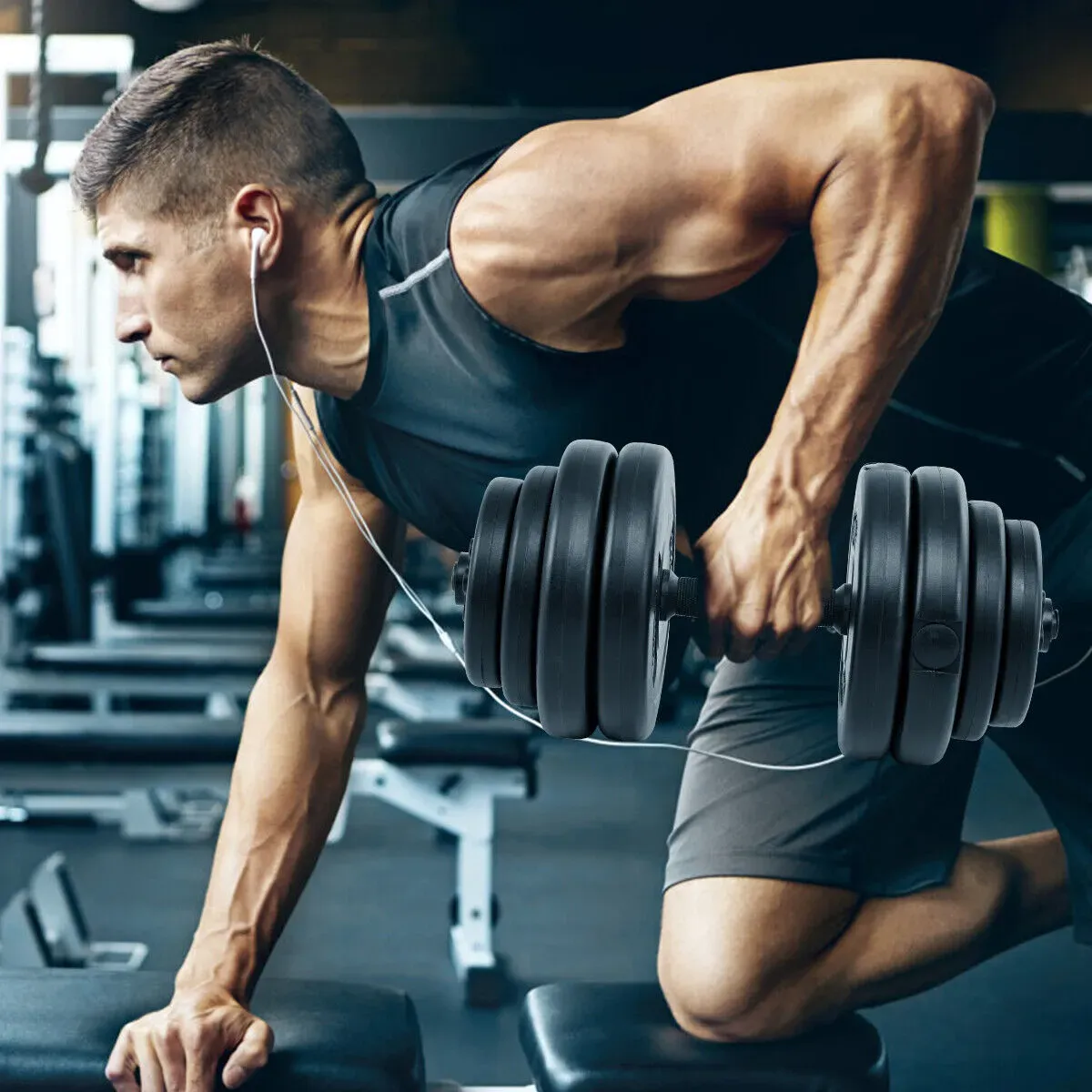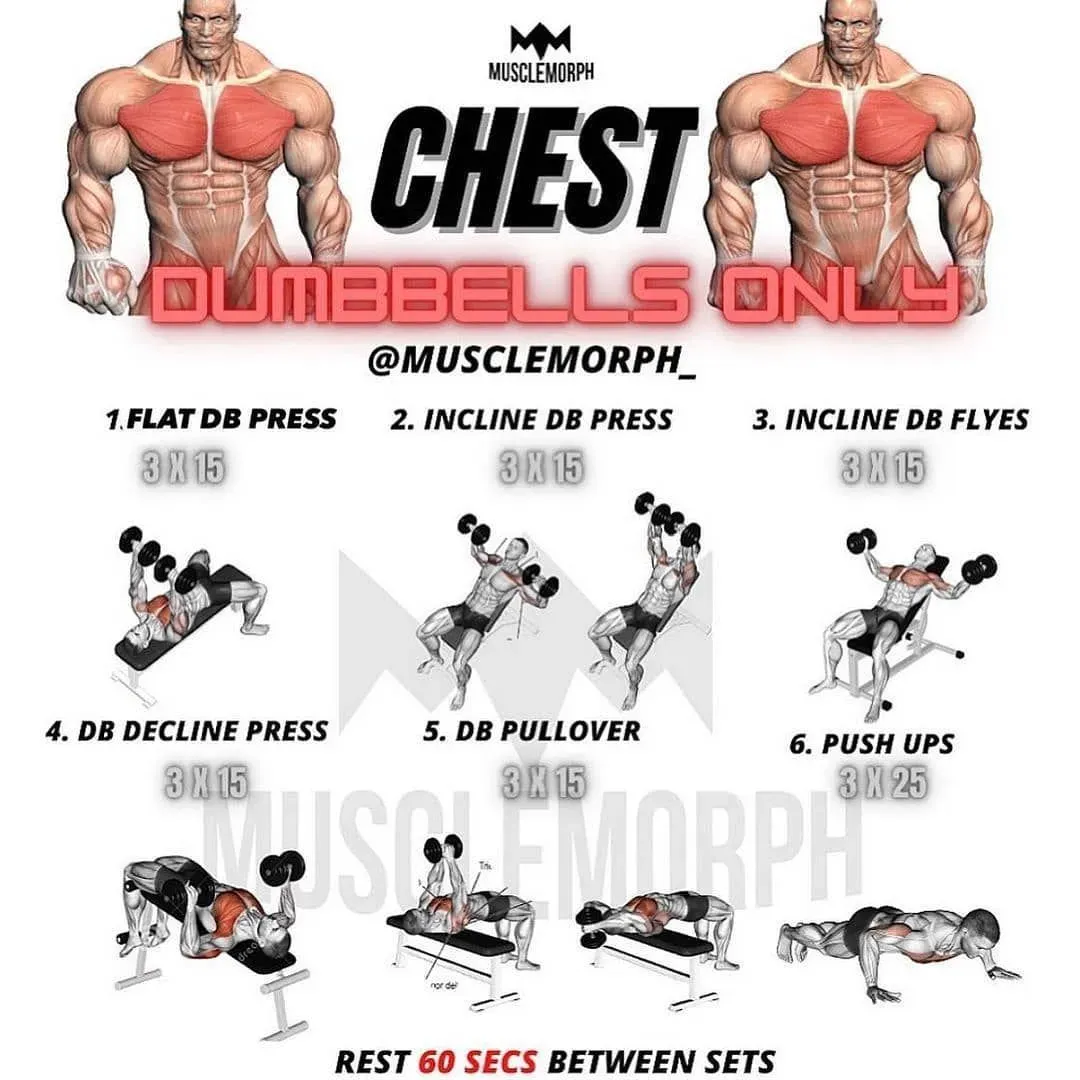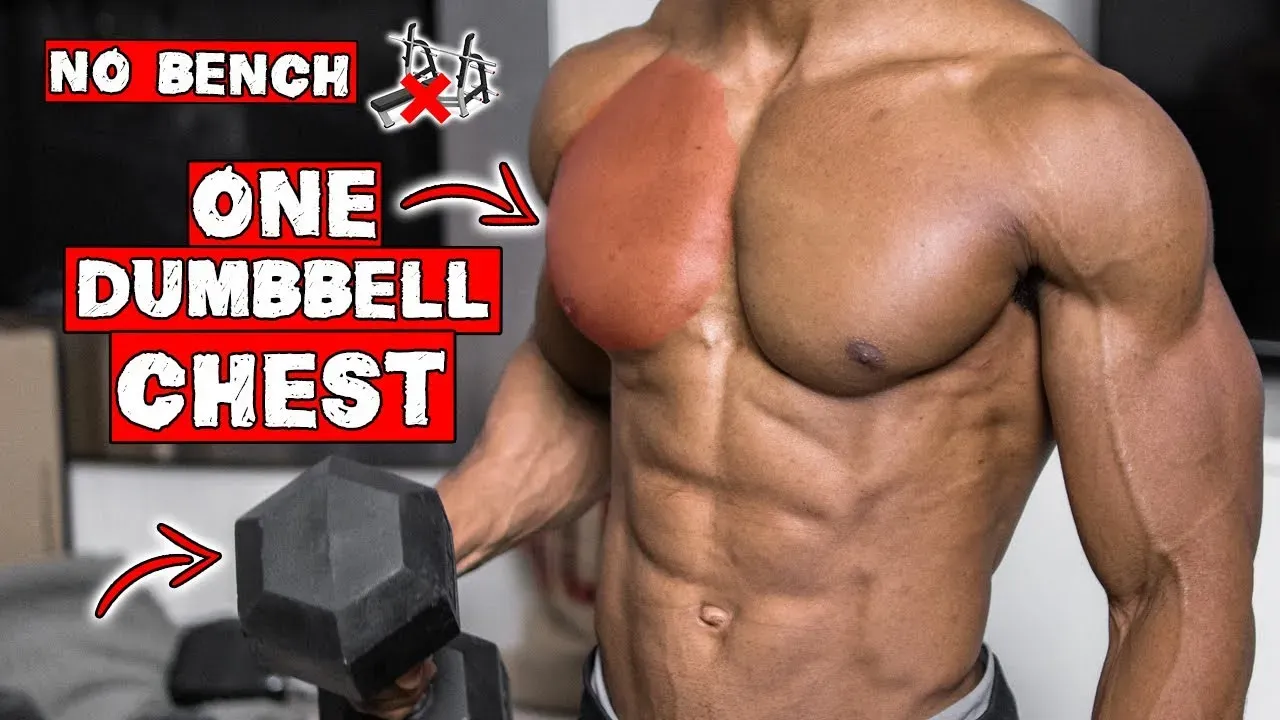Table of Contents
So, the gym is out, and your home setup is... well, limited to a single dumbbell. You might be wondering if building a respectable chest is even possible with just one weight. Forget the racks of weights and fancy machines; you absolutely can achieve a highly effective chest workout at home with one dumbbell. It's not about having a room full of gear; it's about smart exercise selection and execution.
Why One Dumbbell Works for Your Chest

Why One Dumbbell Works for Your Chest
Look, when you’re staring at a single dumbbell, it’s easy to feel limited, like you’re bringing a butter knife to a gunfight. But hear me out: achest workout at home with one dumbbellisn't just a last resort; it's surprisingly effective. Why does one dumbbell work? For starters, it forces your body to work harder to stabilize the weight. You're not just pushing; you're actively resisting rotation and imbalance, which recruits more of those smaller, often-neglected stabilizer muscles around your shoulder joint and core. This unilateral (one-sided) loading also helps identify and address strength imbalances between your left and right sides. Ever notice one arm doing more work than the other? A single dumbbell shines a spotlight on that, forcing the weaker side to catch up. Plus, let's be honest, it takes up zero space, which is a win in any home gym setup, especially if your living room doubles as your workout zone.
- Increased stabilizer muscle activation
- Helps identify and correct strength imbalances
- Space-efficient and portable
- Allows for unique movement patterns
Essential Exercises for a Chest Workout at Home with One Dumbbell

Essential Exercises for a Chest Workout at Home with One Dumbbell
Alright, so you've got your single dumbbell and a patch of floor. What now? Building your chest with just one weight means getting smart about exercise selection. You can't just do a standard flat bench press, obviously. You need moves that leverage the unique benefits of unilateral training. Think about exercises that allow for a full range of motion and hit the chest fibers from different angles. The floor press is a classic, giving you a stable base to push from. Single-arm flyes, performed carefully on the floor or even slightly elevated, offer that crucial adduction movement often missed with just pressing. And don't forget variations like the single-arm floor press with a slight arch or even some creative moves that mimic cable crossovers, focusing on bringing the arm across the body. These are the foundational blocks for your effectivechest workout at home with one dumbbell.
Structuring Your Chest Workout at Home with One Dumbbell

Structuring Your Chest Workout at Home with One Dumbbell
Making a Plan for Your Single Dumbbell Session
you know the moves, but just winging it won't cut it for a solidchest workout at home with one dumbbell. Structure matters. Think about it like building anything worthwhile – you need a blueprint. You can't just randomly do sets and reps. A structured plan ensures you hit your muscles effectively, manage fatigue, and actually make progress. This isn't about being rigid, but having a clear sequence of exercises and a target number of sets and reps for each. Without structure, you're just moving a weight around; with it, you're training. It also helps you track your performance week to week, which is crucial for knowing if you're getting stronger or just spinning your wheels.
Putting the Pieces Together: Sets, Reps, and Order
How do you actually structure this minimalist chest session? Start with your main pressing movement, like the single-arm floor press. This is your heavy hitter. Aim for 3-4 sets. Rep ranges depend on your goal: 6-12 reps for muscle growth, maybe a bit lower for strength if the weight allows. Follow that with a movement that focuses on the squeeze, like single-arm flyes, again for 3-4 sets, perhaps in the 10-15 rep range to really feel the contraction. You can throw in a third exercise, maybe something like a single-arm decline press variation if you can prop yourself up safely. The key is cycling between exercises to allow for rest on one side while the other works, or resting completely between sets of the same exercise performed on both sides consecutively.
So, how many sets and reps are right for *you* today?
Progressing Your Chest Workout at Home with One Dumbbell

Progressing Your Chest Workout at Home with One Dumbbell
Making Your Single Dumbbell Feel Heavy Again
so you've crushed your initialchest workout at home with one dumbbella few times, and maybe that weight that felt challenging is starting to feel a bit... light. This is where things get interesting. Since you likely can't just grab a heavier dumbbell (you only have the one, remember?), you need to get creative with progression. Simply doing the same thing won't build more muscle or strength indefinitely. The easiest way to keep challenging yourself is by increasing the volume. That means adding more reps per set or adding extra sets to your workout. If you were doing 3 sets of 10 on the single-arm floor press, try pushing for 3 sets of 12, or even adding a fourth set.
Tweaking the Details: Tempo, Rest, and Time Under Tension
Beyond just adding reps or sets, you can manipulate other variables to make yourchest workout at home with one dumbbellsignificantly harder without changing the weight. Slow down the eccentric (lowering) portion of the movement. Instead of just dropping the weight, control it for a count of three or four seconds. This increases time under tension, forcing your muscles to work harder for longer. Shorten your rest periods between sets. If you were resting 90 seconds, drop it to 60 or even 45. This ramps up the intensity and metabolic stress. You can also add pauses at the bottom (chest level) or top (full contraction) of the movement to eliminate momentum and increase muscle activation.
How long are you *really* resting between those sets?
Exploring Angles and Advanced Techniques
Another way to progress yourchest workout at home with one dumbbellis by introducing variations or slightly altering the angle. While a bench offers easy incline/decline options, you can improvise. Can you safely prop your upper back up on a sturdy cushion or a couple of thick books for a slight incline press? Even a few inches can change the muscle recruitment. Consider exercises that combine movements, like a press followed immediately by a flye with the same arm. Or try techniques like rest-pause, where you perform a set to near failure, take a short 10-15 second rest, and then squeeze out a few more reps with the same weight. It's about finding ways to increase the demand on the muscle fibers.
Avoiding Pitfalls in Your One Dumbbell Chest Training

Avoiding Pitfalls in Your One Dumbbell Chest Training
Don't Let Form Go Sideways
so you've got the single dumbbell in hand, ready for yourchest workout at home with one dumbbell. The biggest mistake people make here? Letting their form crumble. With unilateral training, it's tempting to twist, lean, or hike your shoulder to get the weight up, especially as you fatigue. This isn't just ineffective for your chest; it's an express train to Injuryville. Keep your core tight, your back flat on the floor (or whatever surface you're on), and focus on controlling the weight through the entire range of motion. Think about driving the weight up using your chest muscle, not just muscling it with your shoulder or triceps. A slightly lighter weight with perfect form beats heaving a heavier one any day.
Ignoring the Other Side (and Other Muscles)
It sounds obvious, but sometimes in the rush of doing achest workout at home with one dumbbell, people forget to give the other side equal attention. Always match your sets and reps for both arms. Consistency is key to preventing those strength imbalances we talked about earlier from getting worse. Also, remember that your chest doesn't work in a vacuum. Don't let a chest-focused day mean you skip warming up your shoulders or doing some light upper back work. Keeping your shoulder joint healthy and balanced is critical when you're pushing weight, even if it's just one dumbbell.
- Rushing reps and using momentum instead of muscle
- Letting your body twist or bridge excessively
- Not completing the full range of motion
- Failing to match reps and sets on both sides
- Skipping essential warm-ups or cool-downs
Your Single Dumbbell Chest Success
Look, nobody's saying one dumbbell replaces a fully equipped gym, but frankly, that's not the point. You set out to get a decent chest workout at home with one dumbbell, and it's clear that's entirely achievable. By focusing on key movements, paying attention to form, and getting creative with angles and tempo, you can hit your chest muscles effectively. It requires a bit more thought than just stacking plates, sure, but the payoff is a versatile, no-excuses approach to training. Stop waiting for the perfect setup or lamenting what you don't have. Use the single weight you've got, apply these principles, and get to work. The iron doesn't care how many of its buddies you have; it just cares if you're pushing it.
